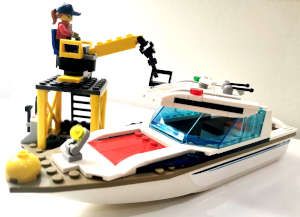-
Argo Workflows: Passing artifacts in a multi-step WorkflowTemplate
3 min read

In a Workflow we'll need to be able to share data between the different steps. To do so we can use the
artifactssection in the WorkflowTemplate. This allows us to pass data between steps in a Workflow.29/10/2024
Read more... -
Argo Workflows: Input Parameters in a WorkflowTemplate
2 min read

Having a WorkflowTemplate with input parameters in Argo Workflows allows you to create reusable templates that can be customized at runtime. This is useful when you want to pass dynamic values to the workflow template when you submit it.
Following the example of the WorkflowTemplate that builds and pushes a Docker image using Kaniko, we are going to update it to use input parameters.
28/10/2024
Read more... -
Create a reusable Argo WorkflowTemplate
2 min read

Given a specific Argo Workflow, you can convert it into a reusable Argo WorkflowTemplate. This allows you to reference the template across multiple workflows without repeating it's YAML definition.
25/10/2024
Read more... -
Build and Push Container Images in Kubernetes with Argo Workflows
2 min read

Building container images directly in Kubernetes offers a streamlined and efficient way to manage your containerized applications. Tools like Kaniko allow you to build container images inside Kubernetes Pods. In this post, instead of using other frameworks like Tekton or Shipwright, we'll define our custom pipeline directly with Argo Workflows.
24/10/2024
Read more... -
Building container images on Kubernetes with Kaniko
3 min read

When trying to build container images on Kubernetes we might be tempted to use the Docker in Docker approach: To do this you'll need to:
- Run a docker daemon on the nodes, either as a service or as a container runtime (which it is deprecated since 1.20)
- Allow the Pod to communicate with docker's socket
This approach is considered a security risk and it should be avoided.
As alternative, we can use kaniko: It is a tool to build container images inside containers (hence, Kubernetes clusters)
04/04/2022
Read more...